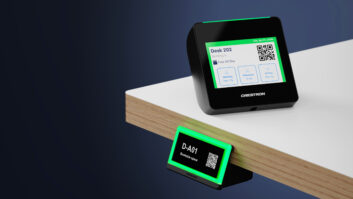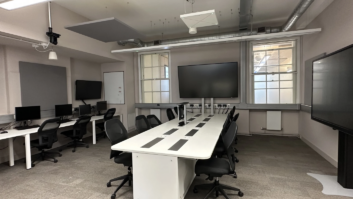 The importance of hybrid learning continues to grow even as we move out of the pandemic. Even as people are physically returning to the classroom, the technology supporting this form of learning is gaining popularity. But how do universities and colleges ensure they have the right approach to support students and educators?
The importance of hybrid learning continues to grow even as we move out of the pandemic. Even as people are physically returning to the classroom, the technology supporting this form of learning is gaining popularity. But how do universities and colleges ensure they have the right approach to support students and educators?
A recent report published by Bay View Analytic, Digital Learning Pulse Survey (https://www.bayviewanalytics.com/reports/pulse/infographic-spring2021.pdf) stated that most students want to keep a proportion of studying online.
The report found that first-year students lean to a total return to on-campus learning because of the social element of university life. However, students in their last year of education preferred the flexible hybrid models. Students in their final year of education are likely to have started internships or may find it easier to concentrate in private; A hybrid model allows them to combine study and work more effectively.
IMPLEMENTING HYBRID
Technology plays a significant role in whether remote students feel included and equal in presence to those in the room. When conferencing technology works well, distance students can engage with tutors and other students as if they were there in person. But when they have technical or connectivity issues, or their audio or video presentation is poor, they are likely to feel disconnected from the group and have trouble communicating. As a result, their engagement is likely to suffer.
Overcoming the challenges that arise in a hybrid learning environment can be complex. No one size fits all solution is the answer. Instead, a blend of techniques and technology will need to be applied.
However, the following steps will likely need to be taken:
• Course design will inevitably need to move from instructor-centred (lecture style) to student-centred (active learning) to make them fit better with a hybrid learning model. Leading institutions continue to develop their digital pedagogy to optimise learning in these environments.
• Classroom / educational space redesign. In well-designed hybrid classrooms, both remote and on-site students should be able to see and hear the tutor and each other and be able to ask a question or respond efficiently. Educational establishments should review their classrooms and technology to ensure they provide a space that works equally for all.
• Selecting the right technology. High quality video and audio is critical to delivering the best experience. AI technology can ensure that devices optimise for different environments and layouts so the educator can focus on the lesson, illustrate ideas, capture and share content while not worrying about the technology. Simplicity of the technology should be of the highest priority. Go for technology that is easy to set up, to run lessons and to manage. Devices that mount on a mobile stand allow you to easily adapt to different lesson styles. Some classes are enhanced with multiple camera views. Using a platform like Zoom is really beneficial here as the interface is the most intuitive and familiar on the market and can enable simple control with multi cameras.
• Training and support for both teaching staff and students. Educational establishments will need to think about providing training to tutors to ensure they are confident with the technology and new teaching methods being implemented. For students, training on the chosen communication platform and technology should also be provided alongside guidelines on communicating during lessons.
Building highly effective hybrid educational ecosystems where all feel welcomed and supported and remote students are not spectators but protagonists will require a customised convergence of technology, teaching methods and an inclusive environment.







